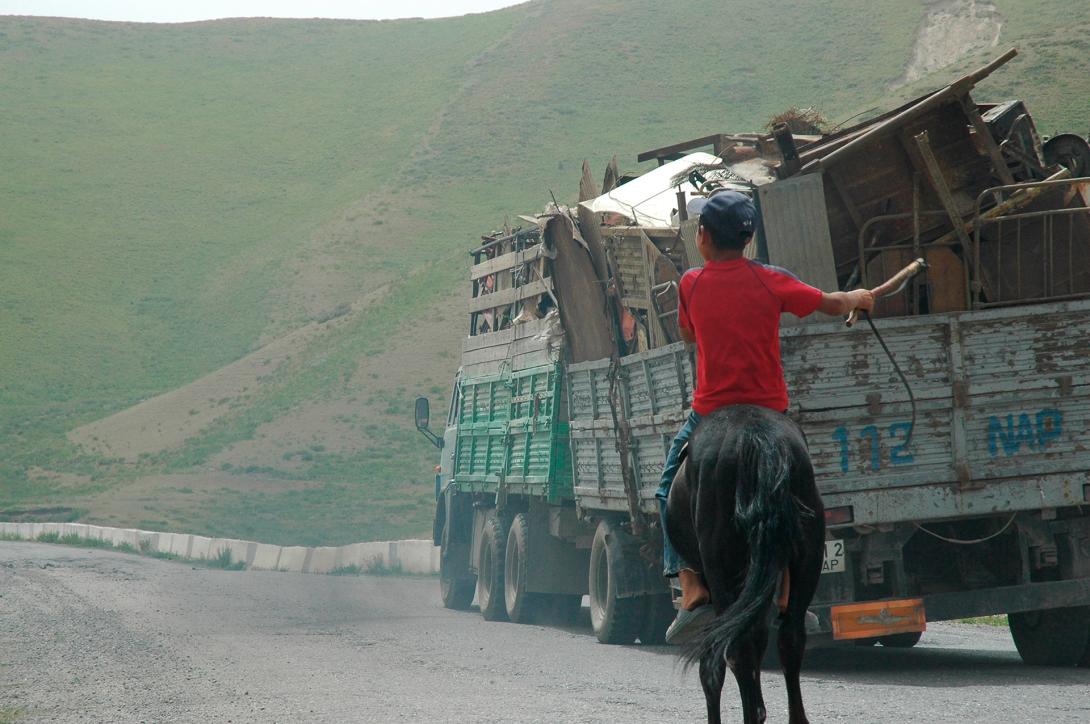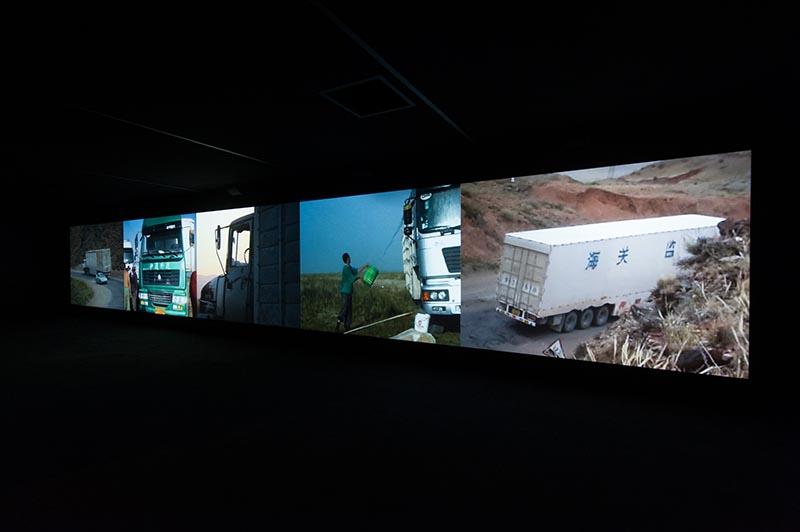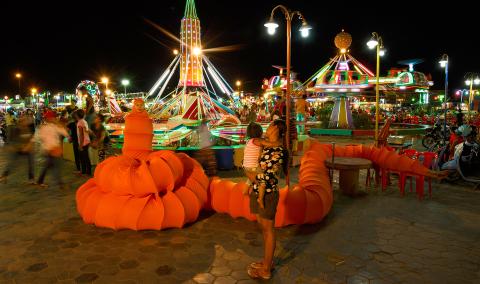Gulnara Kasmalieva and Muratbek Djumaliev
APT8
Gulnara Kasmalieva
Born 1960, Bishkek, Kyrgyz Republic
Muratbek Djumaliev
Born 1965, Bishkek, Kyrgyz Republic
Live and work in Bishkek
The ancient trade route called the Silk Road runs between the mountains that connect China and the Kyrgyz Republic in Central Asia. In their A New Silk Road: Algorithim of Hope and Survival 2006 Gulnara Kasmalieva and Muratbek Djumaliev use the road as a symbol of the complicated process of 'migration, survival and transformation' that has taken place in the Kyrgyz Republic over the last 100 years. Kyrgyz people were originally nomads, but in the last two decades with their independence from the Soviet Union and transition to a free-market economy, their lives have been transformed. The Silk Road itself reflects this history — statues of former communist leaders Mao and Stalin still remain by the side of the road, and a runway for military airplanes now exists as a parking lot for trucks, with formerly nomadic shepherds providing food and shelter. A New Silk Road tracks the passage of a caravan of dilapidated trucks carrying scrap metal to China in exchange for cheap products such as clothing, reflecting on the relationship between overlapping histories, and globalisation and local identity.

Gulnara Kasmalieva / Kyrgyz Republic b.1960 / Muratbek Djumaliev / Kyrgyz Republic b.1965 / A New Silk Road: Algorithm of Survival and Hope (still) 2006 / Five-channel video installation, 4:3, 9:43 minutes, colour, sound, ed.2/5 / Image courtesy and ©: The artists

Gulnara Kasmalieva / Kyrgyz Republic b.1960 / Muratbek Djumaliev / Kyrgyz Republic b.1965 / A New Silk Road: Algorithm of Survival and Hope (installation view) 2006 / Five-channel video installation, 4:3, 9:43 minutes, colour, sound, ed.2/5 / Image courtesy and ©: The artists
